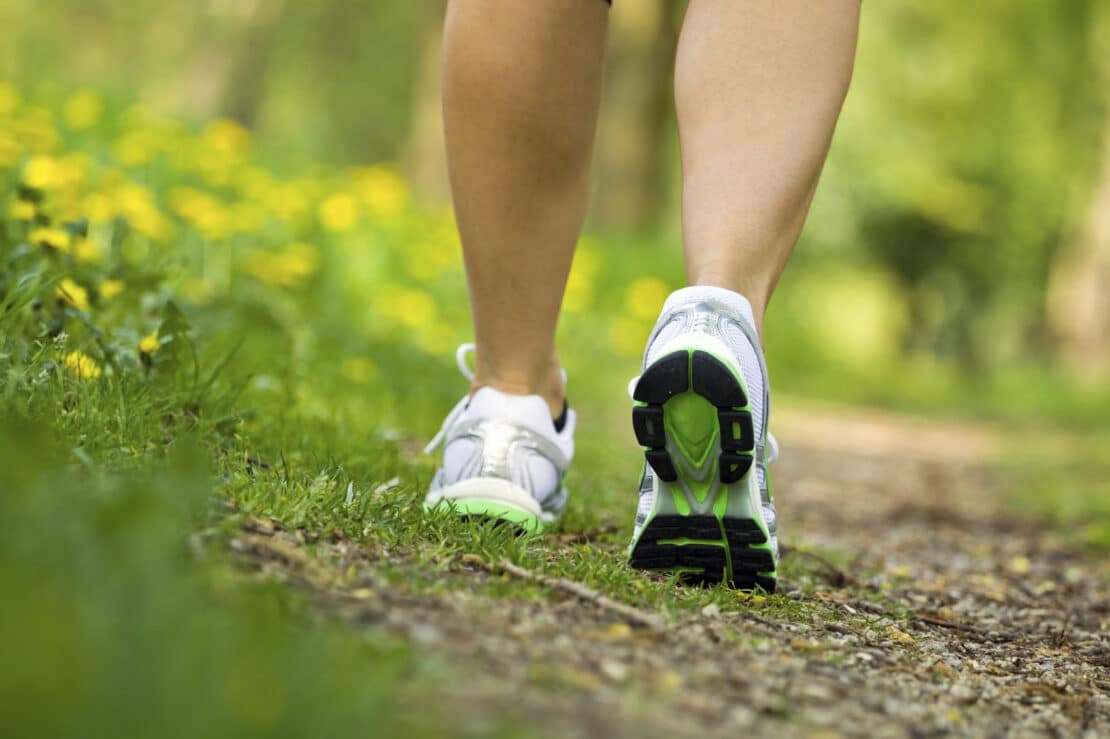If you walk for exercise, a Harvard professor has some simple advice to dramatically increase the health benefits…
Try “interval walking.”
Compared to regular walking, interval walking has been found to greatly improve aerobic fitness, lower blood pressure, reduce weight, increase leg strength, and improve overall health.[1]
Dr. Aaron Baggish is associate director of the Cardiovascular Performance Program at Harvard-affiliated Massachusetts General Hospital in Boston. He says interval walking “is a great way to get the most exercise bang for your buck.”[2]
“It improves endurance, reduces blood pressure, and helps with weight loss,” he explains.
The Japanese Exercise Secret
Japanese researchers have been studying the benefits of interval walking for over a decade.
In one study, researchers from the Shinshu University Graduate School of Medicine gathered 696 men and women between the ages of 58 and 72. They split them into two groups.
They had one group walk normally at 40% of full exertion for three minutes. Then they had them speed up to a 70% exertion rate for three minutes. The walkers repeated these intervals five times for 30 minutes total.
The other group walked at a leisurely 40% exertion rate for the entire 30 minutes. Both groups did the walks four days a week.
After five months, the researchers compared the groups’ fitness and health.
Participants who walked casually showed little improvement. But the interval-walking group had a 12% increase in aerobic fitness. Their blood pressure went down 13%. They had greater leg strength.
The interval walkers also decreased their overall “lifestyle-related disease score.” This is a marker related to smoking, drinking, and weight. They had reduced the frequency of unhealthy habits and lost fat.[3]
The researchers continued to follow the participants for a decade longer. They found that the interval walkers—even those who decreased the regimen to three days a week—maintained or increased their health gains.
The study was published in the Journal of Applied Physiology.
How to Interval Walk
Your first question might be, “How fast do I walk?”
Dr. Baggish said you should “Walk as fast as you can, at a pace you can do briefly, but can’t do forever.” You should not run.
He adds that you don’t have to worry about reaching a particular heart rate.
He also recommends that you:
- Look for smooth terrain. Hills are OK, but an uneven walking surface can lead to stumbles and falls. Parks and shopping malls are good interval walking sites. A school track is good, too, if you can access one.
- Avoid concrete. It’s hard on your joints. A grass or dirt surface is best as long as the terrain is even, says Dr. Baggish.
- Use a treadmill. If you don’t have a good outdoor walking area, a treadmill works. Simply increase the speed when needed.
5 Benefits of Walking
The average American takes 4,774 steps a day, according to a 2017 study at Stanford University.[4]
This may sound like a lot. But our bodies evolved to walk far more.
Scientists believe our Paleo ancestors walked about 16,000 to 22,000 steps a day.[5]
What are we missing?
Here are five major benefits of walking:
- Better mental health. An article published in the Journal of Clinical Psychiatry looked at the mental health benefits of being active. The authors found that exercise, including walking, “reduces levels of the body’s stress hormones, such as adrenaline and cortisol.” It also stimulates endorphins, brain chemicals that are “the body’s natural painkillers and mood elevators.”[6]
- More creativity. A study from Stanford University found that walking enhances creative thinking. The researchers said that their subjects’ creative output increased by an average of 60% when walking.
- Less cancer. An American Cancer Society study found that women who walk at least seven hours a week have a 14% lower risk of breast cancer compared to women who walk three hours or less.
- Longer life. In areas of the world where people live the longest, walking is a big part of their daily routine. These places include Okinawa, Japan, and parts of Italy where people use cars less and spend hours on their feet everyday tending garden crops. Researchers have found that even minimal amounts of walking are associated with lower mortality risk.[7]
- Weight loss. A 2015 study by the London School of Economics followed about 100,000 subjects. It found that people who walked for more than 30 minutes a day had smaller waists than those who regularly engaged in sports and other forms of exercise.[8]
If you walk for fitness, why not maximize these important benefits? Supercharge your routine with interval walking.
Editor’s Note: Discover other natural, non-drug methods to transform your health. Read our monthly journal, Independent Healing. It’s your best source for unbiased, evidence-based medical information. For more information, click HERE.
Related Articles
Knee Arthritis? Get Off the Golf Cart and Walk the Course
If You Can Walk and Chew Gum, You Can Lose Weight
References:
[1] https://well.blogs.nytimes.com/2015/02/19/walk-hard-walk-easy-repeat/?ref=health&_r=0
[2] http://www.health.harvard.edu/exercise-and-fitness/put-some-pep-in-your-step?utm_source=delivra&utm_medium=email&utm_campaign=GB20170607-Walking&utm_id=524627&dlv-ga-memberid=28035839&mid=28035839&ml=524627
[3] http://jap.physiology.org/content/118/5/595
[4] https://www.nature.com/articles/nature23018
[5] https://www.ncbi.nlm.nih.gov/pubmed/25824106
[6] https://www.ncbi.nlm.nih.gov/pmc/articles/PMC1470658/
[7] https://www.cancer.org/latest-news/study-even-a-little-walking-may-help-you-live-longer.html
[8] http://www.lse.ac.uk/website-archive/newsAndMedia/newsArchives/2015/11/Regular-brisk-walking-is-best-exercise-for-keeping-weight-down,-says-LSE-research.aspx

